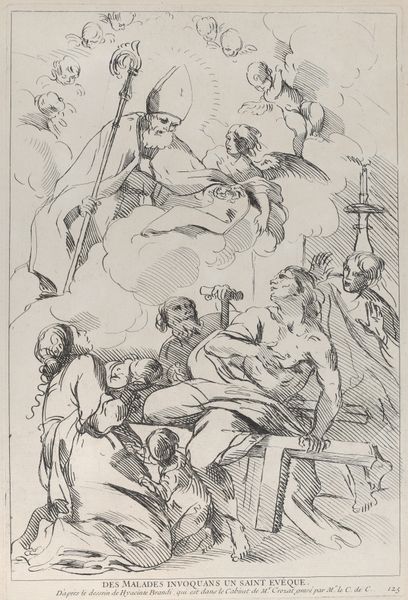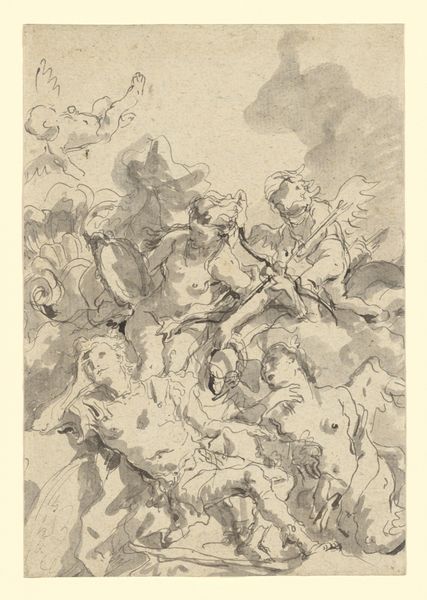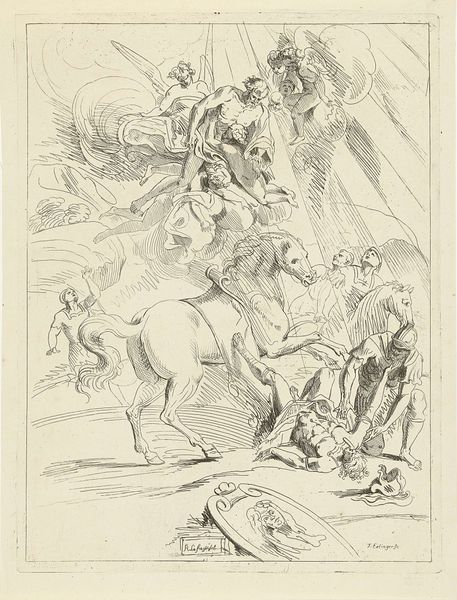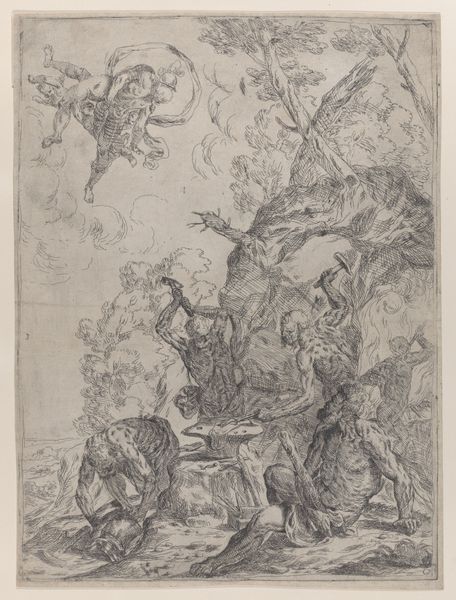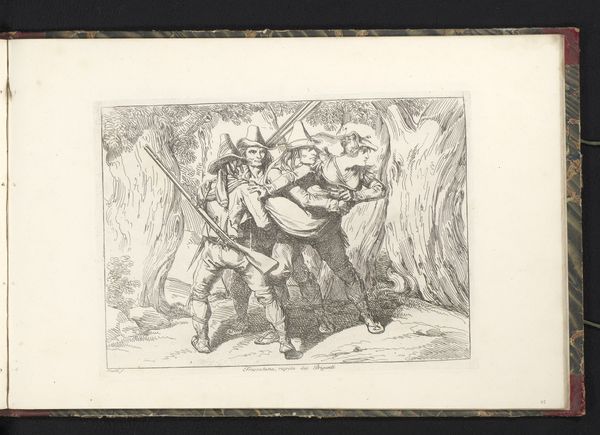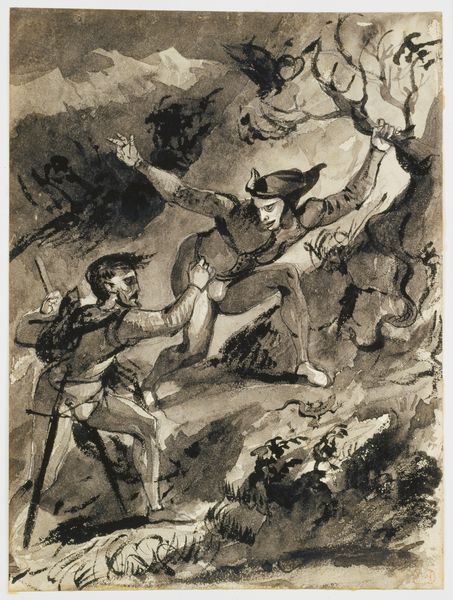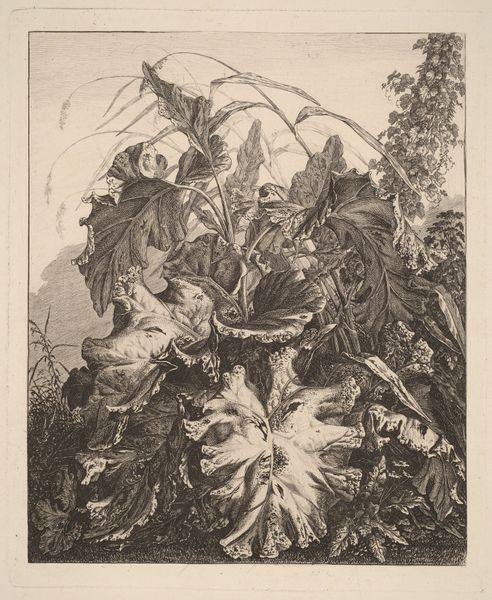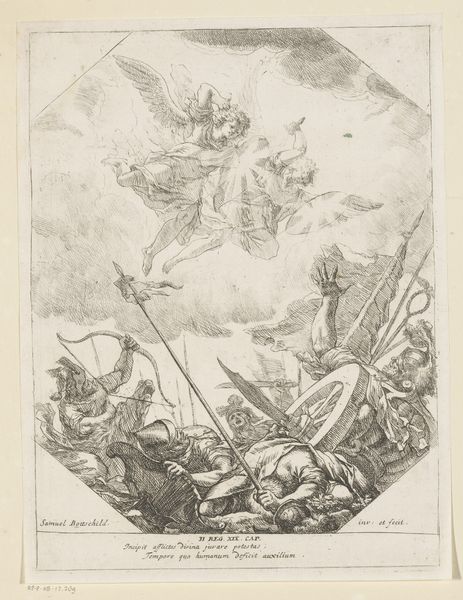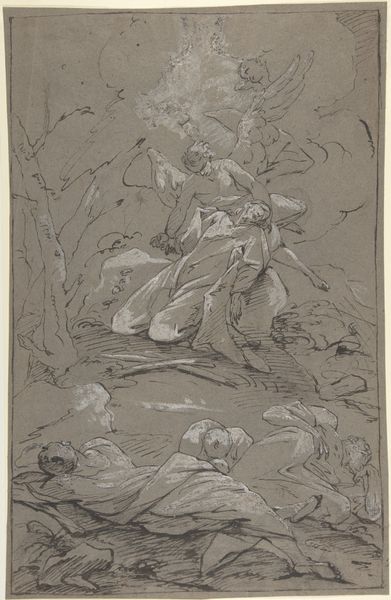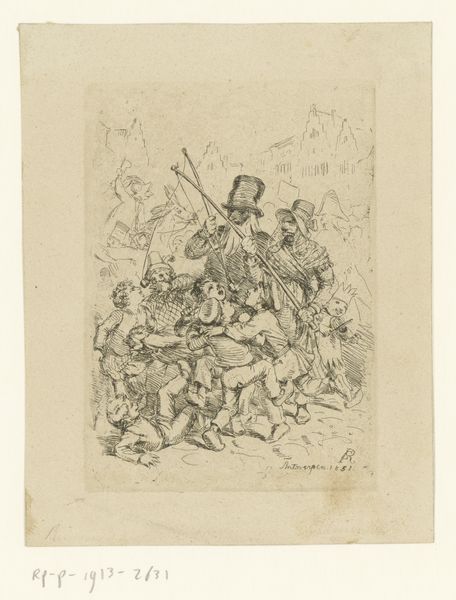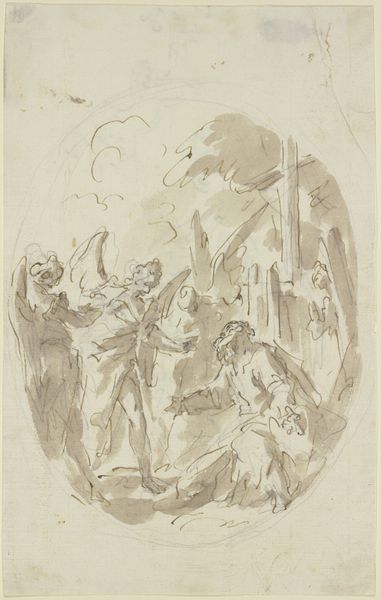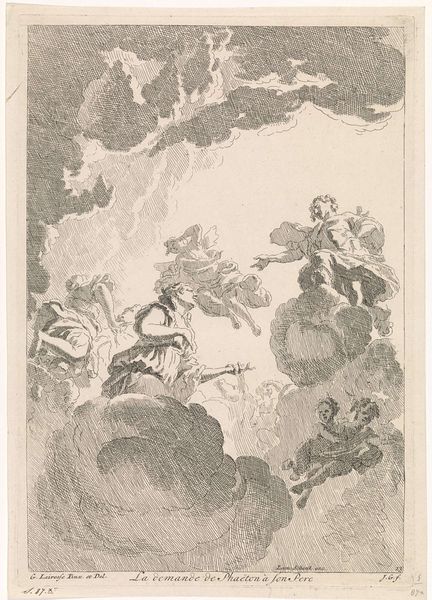
drawing, ink, pencil
#
drawing
#
landscape
#
figuration
#
ink
#
romanticism
#
pencil
#
northern-renaissance
Copyright: Public Domain
Peter Cornelius created this drawing, "The Walk to the Brocken," in Germany during the early 19th century. It reflects the Romantic era's fascination with folklore and the supernatural, particularly inspired by Goethe's Faust. Cornelius depicts two figures braving a landscape teeming with mythical creatures, a scene symbolizing a journey into the unknown. The Brocken, the highest peak in the Harz Mountains, was a place believed to be a meeting point for witches. The image creates meaning through visual codes of German folklore, while its historical association ties it to the rising tide of German nationalism. The artist engages with the culture of his time, which saw a resurgence of interest in national myths and legends. Understanding this work requires us to look at German literary history, folklore, and the socio-political context of early 19th-century Germany, all of which reveals the potent symbolism embedded in what might initially appear as a simple fantasy scene.
Comments
No comments
Be the first to comment and join the conversation on the ultimate creative platform.
